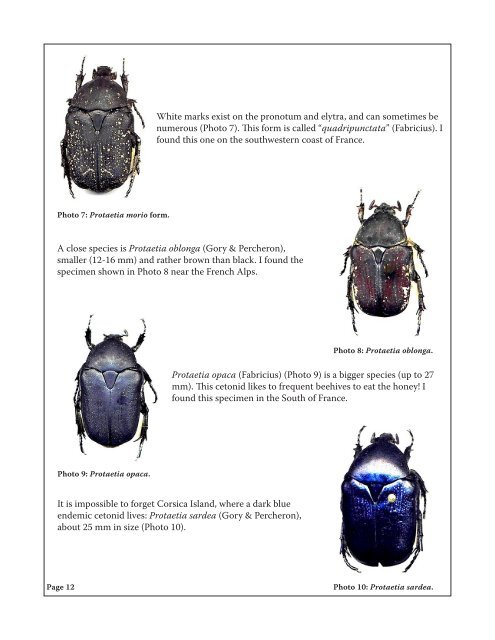Scara b s - University of Nebraska State Museum
Scara b s - University of Nebraska State Museum
Scara b s - University of Nebraska State Museum
Create successful ePaper yourself
Turn your PDF publications into a flip-book with our unique Google optimized e-Paper software.
Photo 7: Protaetia morio form.<br />
Page 12<br />
White marks exist on the pronotum and elytra, and can sometimes be<br />
numerous (Photo 7). This form is called “quadripunctata” (Fabricius). I<br />
found this one on the southwestern coast <strong>of</strong> France.<br />
A close species is Protaetia oblonga (Gory & Percheron),<br />
smaller (12-16 mm) and rather brown than black. I found the<br />
specimen shown in Photo 8 near the French Alps.<br />
Photo 9: Protaetia opaca.<br />
Protaetia opaca (Fabricius) (Photo 9) is a bigger species (up to 27<br />
mm). This cetonid likes to frequent beehives to eat the honey! I<br />
found this specimen in the South <strong>of</strong> France.<br />
It is impossible to forget Corsica Island, where a dark blue<br />
endemic cetonid lives: Protaetia sardea (Gory & Percheron),<br />
about 25 mm in size (Photo 10).<br />
Photo 8: Protaetia oblonga.<br />
Photo 10: Protaetia sardea.
















